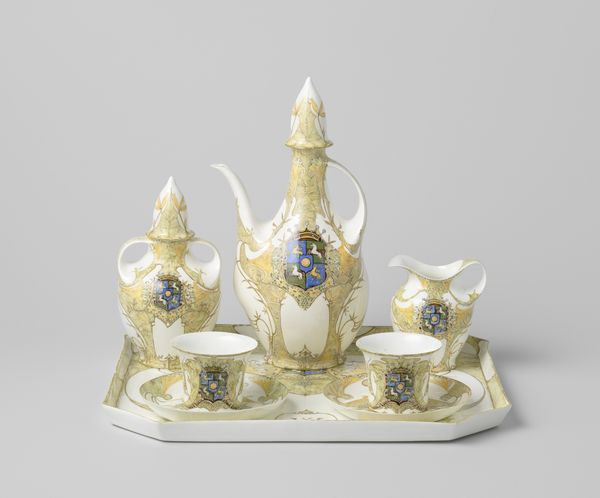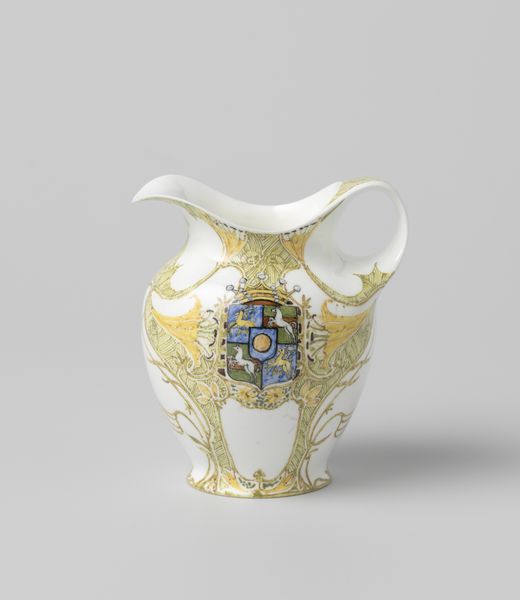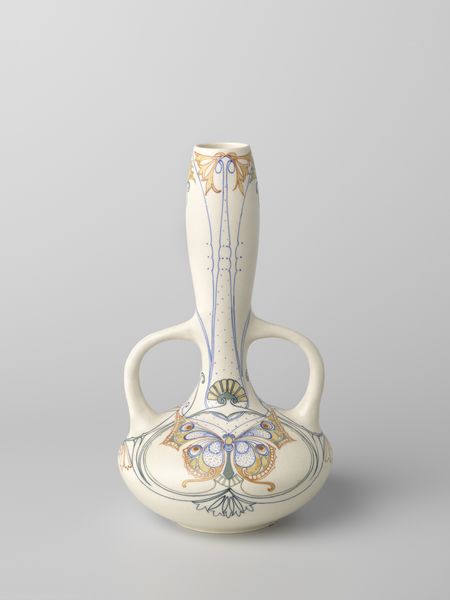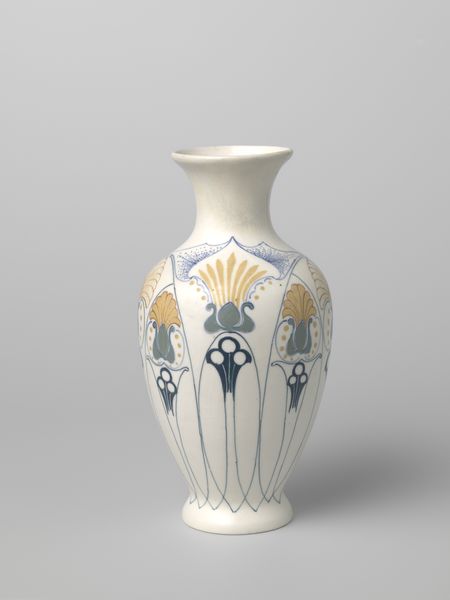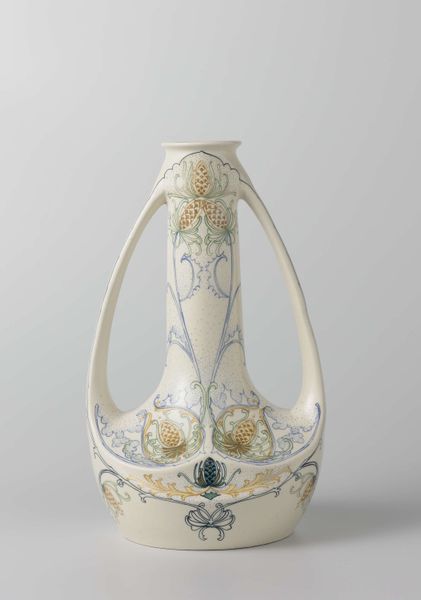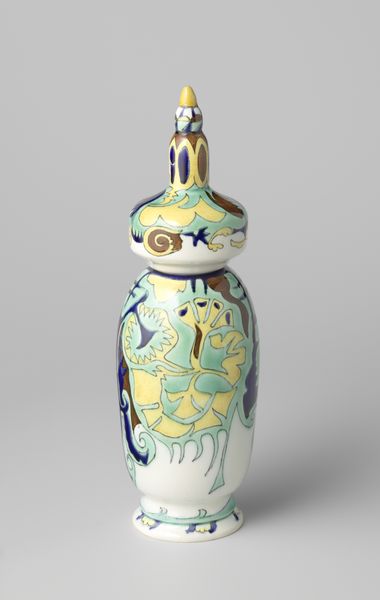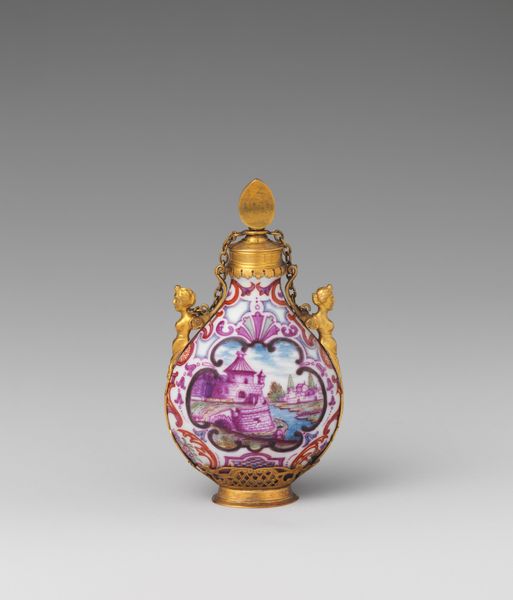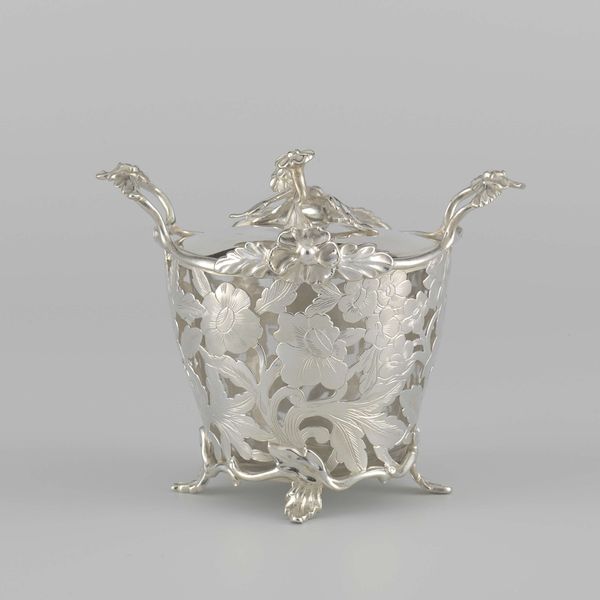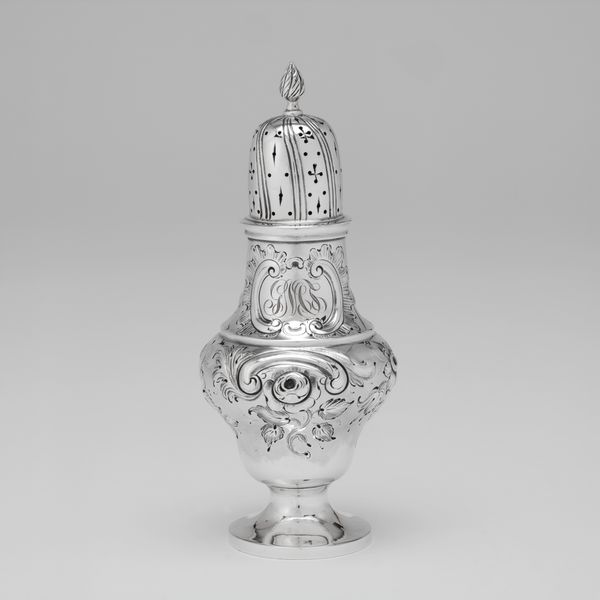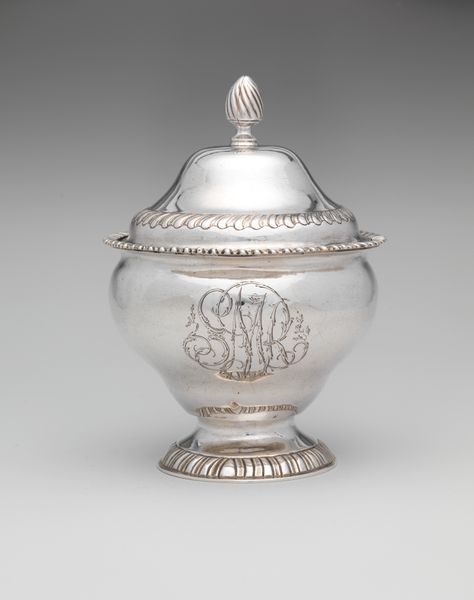
Theepot met deksel, deel van een tête-à-tête, beschilderd met lelies 1900
0:00
0:00
ceramic, porcelain
#
art-nouveau
#
ceramic
#
porcelain
#
decorative-art
Dimensions: height 25.2 cm, height 19.5 cm, width 14 cm, depth 11.5 cm, height 7.8 cm, diameter 4.3 cm
Copyright: Rijks Museum: Open Domain
Editor: So this porcelain teapot with lid, dating back to 1900, part of a "tête-à-tête" set by the N.V. Haagsche Plateelfabriek Rozenburg. The decorative style feels really ornate. What underlying societal factors might have driven the creation and appreciation of such decorative art? Curator: That's a great starting point. Looking at it through a critical lens, the "Art Nouveau" style embodies more than mere aesthetics; it is deeply embedded in its socio-political era. This teapot, crafted during the second wave of colonialism and nascent capitalism, speaks volumes about class structures and cultural consumption. The intricate detailing and costly material suggest it was designed for an elite circle, didn’t it? Editor: It does. Is it about reinforcing the status of the patron? Curator: Absolutely. The emphasis on luxury goods at this time often served to underscore existing social hierarchies. Also, the presence of floral designs like the lilies might allude to ideals of feminine beauty, a construction very much defined by the male gaze of the period, influencing social conduct. Do you observe something specific in how this gender dynamic plays out visually? Editor: It's quite subtle but could the daintiness and curves perhaps be feminized features, aimed at wealthy female consumers? Curator: Precisely. Consider also that the “decorative arts” have often been historically marginalized as 'lesser' than ‘fine art’, typically made by and for women. By studying the intersectional nature of these artistic markers through race, class and gender we may come to a deeper appreciation of art in that period. Editor: This opens up entirely new ways to understanding the context and layers in the design! Curator: Right? Looking at art beyond surface appeal invites a broader critique about societal values and systems of power, both past and present. Editor: Definitely, it highlights the vital role these decorative items played, embodying aspirations, cultural values, and societal imbalances within the social hierarchy. Thank you!
Comments
No comments
Be the first to comment and join the conversation on the ultimate creative platform.

